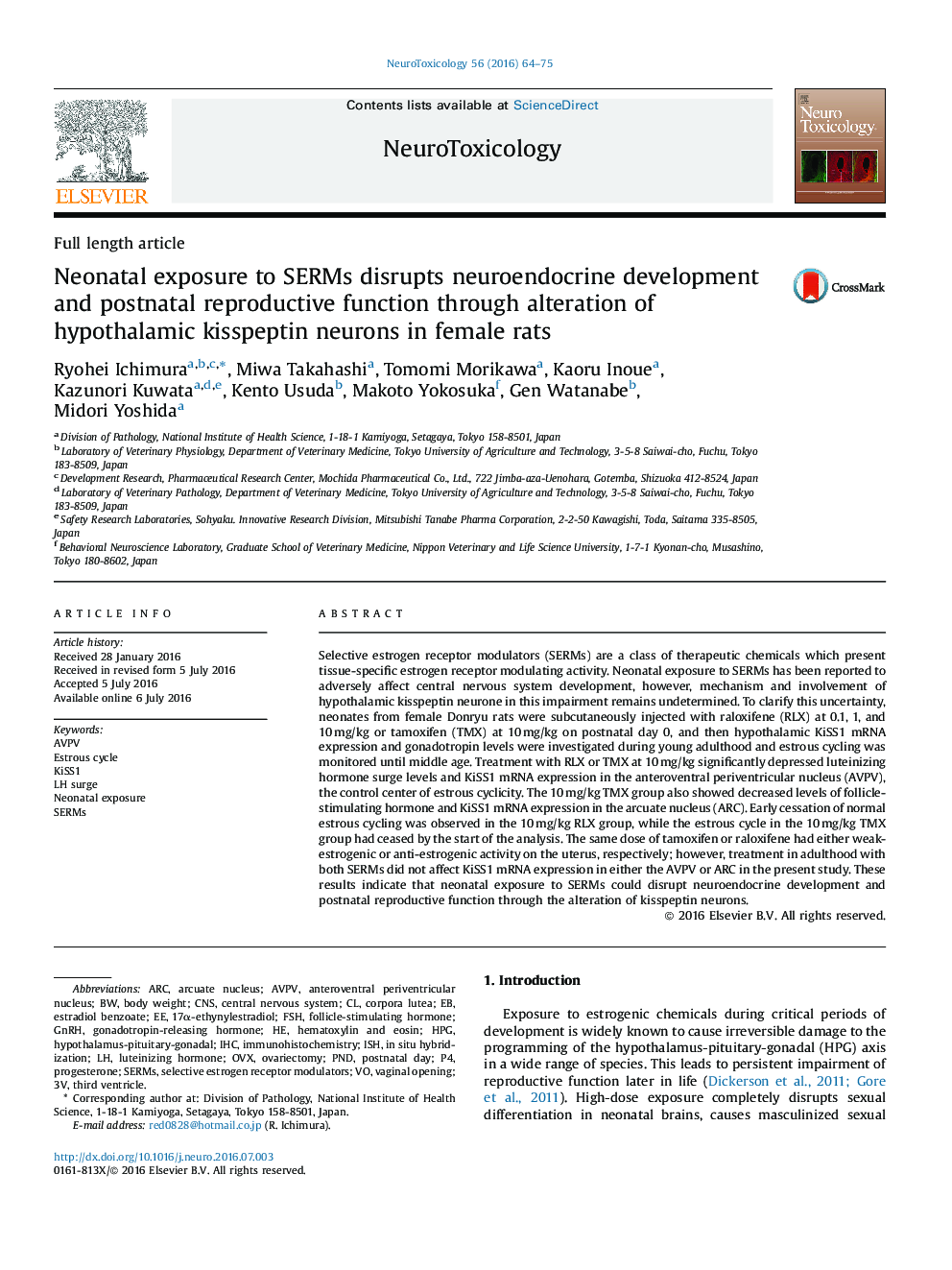| Article ID | Journal | Published Year | Pages | File Type |
|---|---|---|---|---|
| 2589414 | NeuroToxicology | 2016 | 12 Pages |
•Neonatal exposure to SERMs could disrupts the development of kisspeptin neurons.•Raloxifene diminish KiSS1 expression in the AVPV and following LH-surge induction.•Tamoxifen cease estrous cycle and musculinize KiSS1 expression in the ARC.•Tissue-specific estrogenic activity of SERMs may alters with tissue development.
Selective estrogen receptor modulators (SERMs) are a class of therapeutic chemicals which present tissue-specific estrogen receptor modulating activity. Neonatal exposure to SERMs has been reported to adversely affect central nervous system development, however, mechanism and involvement of hypothalamic kisspeptin neurone in this impairment remains undetermined. To clarify this uncertainty, neonates from female Donryu rats were subcutaneously injected with raloxifene (RLX) at 0.1, 1, and 10 mg/kg or tamoxifen (TMX) at 10 mg/kg on postnatal day 0, and then hypothalamic KiSS1 mRNA expression and gonadotropin levels were investigated during young adulthood and estrous cycling was monitored until middle age. Treatment with RLX or TMX at 10 mg/kg significantly depressed luteinizing hormone surge levels and KiSS1 mRNA expression in the anteroventral periventricular nucleus (AVPV), the control center of estrous cyclicity. The 10 mg/kg TMX group also showed decreased levels of follicle-stimulating hormone and KiSS1 mRNA expression in the arcuate nucleus (ARC). Early cessation of normal estrous cycling was observed in the 10 mg/kg RLX group, while the estrous cycle in the 10 mg/kg TMX group had ceased by the start of the analysis. The same dose of tamoxifen or raloxifene had either weak-estrogenic or anti-estrogenic activity on the uterus, respectively; however, treatment in adulthood with both SERMs did not affect KiSS1 mRNA expression in either the AVPV or ARC in the present study. These results indicate that neonatal exposure to SERMs could disrupt neuroendocrine development and postnatal reproductive function through the alteration of kisspeptin neurons.
